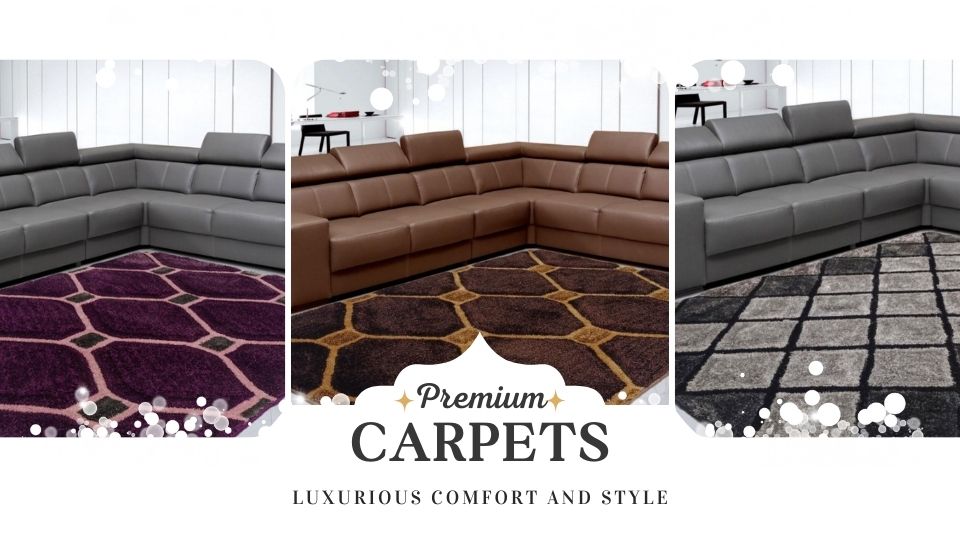Introduction
Carpets are more than just floor coverings; they add warmth, style, and comfort to our homes. Whether you’re considering a plush carpet for your living room or a durable one for high-traffic areas, understanding the origins, types, materials, and maintenance of carpets can help you make an informed decision. In this comprehensive guide, we’ll dive into everything you need to know about carpets.
The Origin of Carpets
The history of carpets dates back to ancient times. The earliest known carpet, the Pazyryk Carpet, was discovered in Siberia and dates back to the 5th century BC. Carpets have been an integral part of many cultures, including Persian, Turkish, and Chinese civilizations. These early carpets were often hand-woven and featured intricate designs that told stories or represented significant cultural symbols.
Types of Carpets
Carpets come in various types, each with its unique characteristics and benefits. Here are some of the most popular types:
1. Cut Pile Carpets
Cut pile carpets have fibers that are cut at the ends, creating a soft, plush texture. They are available in different styles, including Saxony, textured, and frieze.
2. Loop Pile Carpets
Loop pile carpets feature loops of yarn that create a durable and resilient surface. Common styles include Berber and level loop.
3. Cut and Loop Carpets
These carpets combine both cut and looped fibers, resulting in unique patterns and textures. They are ideal for adding visual interest to a room.
4. Woven Carpets
Woven carpets are made using traditional weaving techniques. They are known for their durability and intricate designs, often found in Persian and Oriental rugs.
Materials Used in Carpets
Carpets can be made from a variety of materials, each offering different benefits:
1. Wool
Wool is a natural fiber that is durable, soft, and naturally stain-resistant. It is a popular choice for high-quality carpets.
2. Nylon
Nylon is a synthetic fiber known for its strength and resilience. It is highly resistant to wear and tear, making it suitable for high-traffic areas.
3. Polyester
Polyester carpets are known for their vibrant colors and soft texture. They are also resistant to stains and fading.
4. Olefin (Polypropylene)
Olefin is a synthetic fiber that is resistant to moisture, mildew, and stains. It is often used in outdoor carpets and area rugs.
5. Triexta
Triexta is a newer synthetic fiber that combines the durability of nylon with the softness of polyester. It is also eco-friendly, as it is made from renewable resources.
Use Cases for Carpets
Carpets can be used in various areas of the home, each serving a specific purpose:
1. Living Room
A carpet in the living room adds warmth and comfort, making it a cozy gathering space for family and friends. Choose a durable material like nylon or wool for this high-traffic area.
2. Bedroom
In the bedroom, a plush carpet provides a soft surface to step on when you wake up. Consider a cut pile carpet for added comfort.
3. Stairs and Hallways
These high-traffic areas require durable carpets that can withstand constant use. Loop pile or low-pile carpets are ideal for stairs and hallways.
4. Home Office
A carpet in the home office can reduce noise and create a comfortable working environment. Opt for a low-pile carpet that is easy to maintain.
Carpet Cleaning and Maintenance
Keeping your carpet clean and well-maintained ensures its longevity and keeps it looking fresh. Here are some tips for cleaning and maintaining your carpet:
Regular Vacuuming
Vacuum your carpet regularly to remove dirt and debris. For high-traffic areas, vacuum at least twice a week.
Stain Removal
Treat stains promptly to prevent them from setting. Use a carpet cleaner or a mixture of water and mild detergent for most stains.
Deep Cleaning
Have your carpet professionally cleaned at least once a year. This will remove deep-seated dirt and allergens that regular vacuuming can’t reach.
Rotating Furniture
Move your furniture occasionally to prevent uneven wear and tear on your carpet.
FAQs About Carpets
Q: How often should I replace my carpet?
A: Carpets typically last 5-15 years, depending on the material and level of use. High-quality carpets made from durable materials like wool or nylon may last longer.
Q: Can carpets trigger allergies?
A: Carpets can trap allergens like dust and pet dander. Regular cleaning and vacuuming can help reduce allergens. Consider hypoallergenic carpet options if you have severe allergies.
Q: Are carpets eco-friendly?
A: Some carpets, like those made from wool or renewable synthetic fibers like triexta, are eco-friendly. Look for carpets with sustainable manufacturing practices and certifications.
Styles of Carpets
Carpets come in various styles to suit different aesthetics and functional needs:
1. Traditional
Traditional carpets often feature intricate patterns and designs, inspired by Persian and Oriental rugs. They add a classic and elegant touch to any room.
2. Modern
Modern carpets have clean lines and minimalist designs. They are perfect for contemporary spaces and often come in neutral colors.
3. Transitional
Transitional carpets blend traditional and modern elements, offering versatile designs that work in various settings.
4. Shag
Shag carpets have long, fluffy fibers that create a cozy and luxurious feel. They are ideal for adding texture and warmth to a room.


